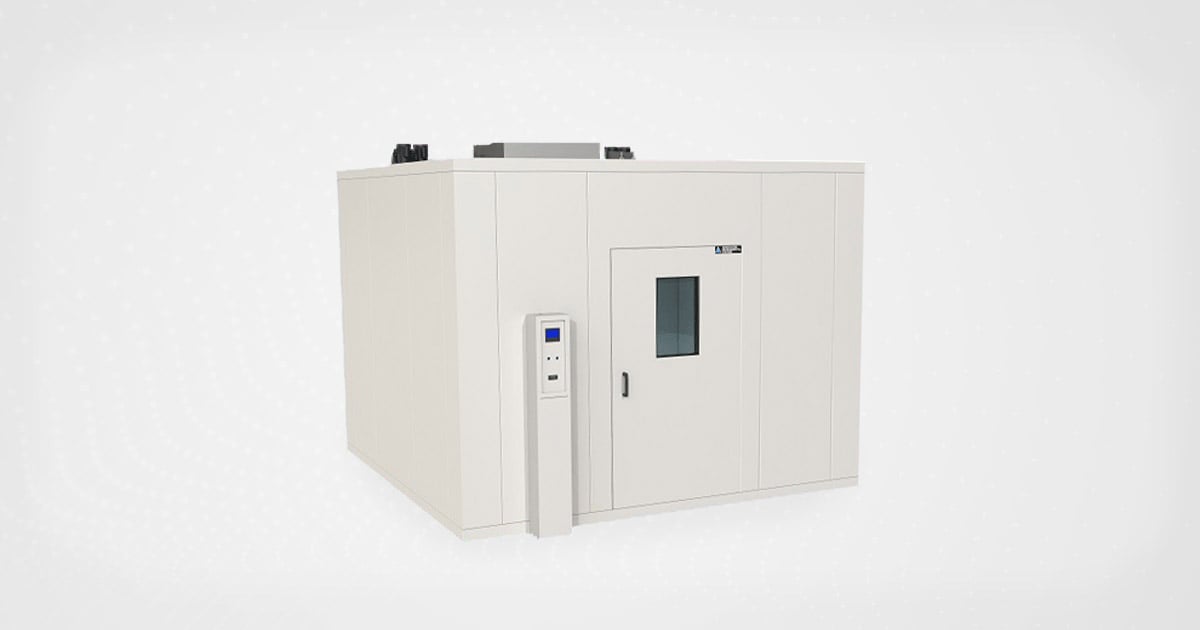What Is the Price of a Walk-In Test Chamber?

It’s a truism of the industry that no two companies’ testing needs are exactly the same. With a variety of standards, internal best practices, characteristics of the devices under test (DUTs), and performance and size considerations, there’s so much that goes into finding a test chamber that’s right for you.
Therefore the question of ‘how much does a test chamber cost?’ isn’t so easy to answer. Even standard, in-stock chambers come with customization possibilities that alter the price tag. Purchasing a test chamber requires substantial research and the support of an experienced manufacturer to break down your options.
Walk-in chambers fall into their own category, not just because they’re designed to accommodate people in addition to large products such as large prismatic cell batteries, or massive quantities all at once, but also because every unit needs to be custom-built. There are no standard models.
In general, the price for a walk-in test chamber starts at around $85,000. That number changes significantly depending on size and performance. Here’s a little bit more context on walk-in chambers, what you might be paying for, and the overall benefits of owning one.
Why Purchase a Walk-In Test Chamber?
When you learn the base price of walk-in chambers you may wonder if you need one at all. After all, floor models optimize performance and can be built with large internal workspaces.
Companies purchase walk-in chambers for different reasons. The most obvious need is size. Large or oddly shaped products don’t necessarily fit within the confines of a floor model test chamber, especially when you factor in the airflow ratio (one-to-three for the volume of the product to the volume of the workspace).
Other companies opt for walk-in chambers to accommodate a huge amount of products at a time—thousands of cell phones, for example—or for engineers to observe the products up close during testing. The former scenario makes for greater testing efficiency, the latter is only possible with a massive internal workspace.
Walk-in chambers can be customized for volume and shape, performance, air quality (if people spend time within the chamber), and more. You can even add an anteroom to separate the chamber space from the lab.
So although you can find similar performance from floor models (or benchtops for that matter), you can only reach that level of customization with a walk-in test chamber.
Walk-In Stability Test Chambers Vs. Walk-In Performance Test Chambers
The testing purpose of the chamber is another consideration. All things equal in terms of size and volume, walk-in performance test chambers tend to be more expensive than stability test chambers.
Stability test chambers are designed for steady-state testing where they reach a set condition point and stay there. If you require temperature cycling, you’ll need a performance chamber. As the level of performance increases, so, too, does the cost.
More advanced system components, such as bigger fan motors, larger compressors, evaporators, boosts to reach extremely low temperatures or humidity levels, or sensors to measure high levels of relative humidity all drive up the price of walk-in test chambers.
Panel Build Vs. Structural Build
As you might imagine, the sheer size of walk-in test chambers makes them difficult to deliver pre-built. Manufacturers get around this challenge by offering panel-built models. They construct the components separately and then assemble the chambers onsite.
This reduces shipping costs, makes for a more efficient build, and gives you flexibility. If needed, you can break down the test chamber and move it (or reconfigure the walls), which isn’t the case for a chamber bolted to the floor.
Now, panel-built chambers have limited performance levels. If you push the temperatures too high, increasing the pressure inside the workspace, you risk blowing out the walls completely. Similarly, high heat combined with humidity can cause delamination, undermining the integrity of the chamber.
If you do require high-performance testing, you’ll need a structural build. These walk-in models are constructed with solid steel and can withstand extreme temperatures and humidity. For context, panel builds, without customization, allow for a temperature range of -65°C to 85°C and relative humidity up to 85%. Structural builds sustain temperatures from -73°C to +538°C and relative humidity between 10 and 95%.
Because they don’t have the same design flexibility, structural builds are more expensive. Engineers spend time getting the intricacies of the designs just right before going into manufacturing.
Finding the Right Walk-In Test Chamber for Your Budget
There are several factors to consider when researching walk-in test chambers. With such a large capital purchase, you can’t afford to overlook any detail. Consult your entire team. Work to understand your testing requirements. Talk to your building manager about power needs and available floor space.
And then, most importantly, contact an experienced test chamber manufacturer that can build a custom solution within your budget.
Associated Environmental Systems has a long history of designing large-scale, walk-in chambers with precise control and reliability. With a full team of engineers and customer service specialists, AES guides you through the buying process from initial designs to manufacturing. They even offer onsite installation.
In addition, when you partner with AES, you’ll gain support throughout the life of the test chamber. That means you’ll receive a custom chamber with exact specifications and have it performing for 10 years or more. More efficient testing over a longer period of time—that’s the advantage of working with AES.
Learn more about our custom line of walk-in test chambers.


